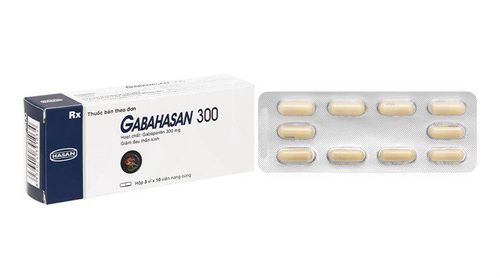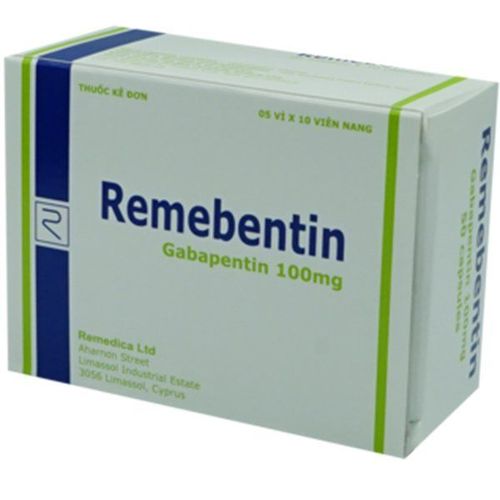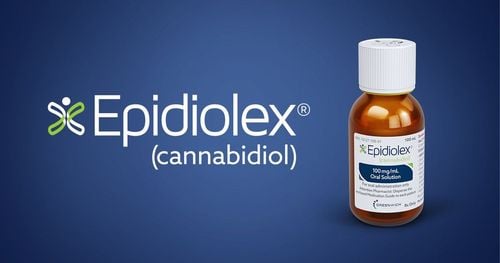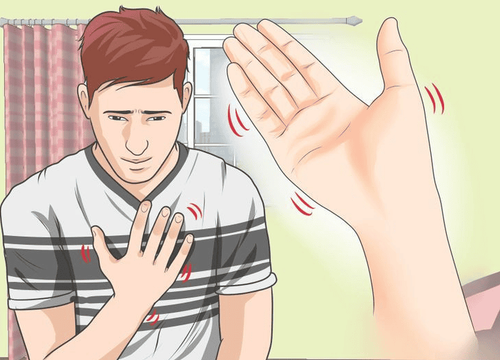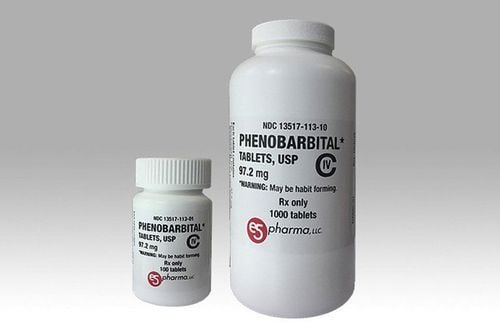This is an automatically translated article.
Levetral is prescribed by doctors to treat primary or secondary partial seizures in adults and adolescents. The drug can be used alone or in combination with other drugs, because the mechanism of action of this drug is not the same as that of existing antiepileptic drugs.
1. Uses of the drug Levetral
Levetiracetam 500 mg drug has the main ingredient Levetiracetam 500 mg. It is available as a tablet or as a drug that can be used as monotherapy in certain cases of epilepsy or in combination with other drugs for the treatment of epilepsy.
Levetiracetam is a pyrolidin derivative, has anticonvulsant activity and it is chemically unrelated to other existing antiepileptic drugs, so it can be used in combination. The mechanism of action of levetiracetam is currently unknown. Levetiracetam has no affinity for receptors such as gamma aminobutyric acid (GABA), glycin or N-methyl D-aspartate (NMDA). The drug can act through a specific binding site in the brain tissue, the synaptic vesicle protein 2A, and it binds only to the synaptic membranes of the central nervous system, but not to peripheral tissues. Therefore, levetiracetam inhibits epileptic flare but does not affect normal nerve excitability.
2. Indications and contraindications of Levetral 500 mg
Levetral 500mg is indicated in the following cases:
As monotherapy in adults and adolescents 16 years of age and older with newly diagnosed epilepsy, to treat certain types of epilepsy. Levetiracetam is used in epilepsy where seizures start on only one side of the brain, but can then spread to a larger area on both sides of the brain, helping to reduce the number of seizures.
In combination with other antiepileptic drugs in the treatment of:
Partial seizures in adults and children 1 month of age and older. Myoclonic epilepsy in adults and children from 12 years of age. Generalized seizures cause primary tonic-clonic seizures in adults and children 12 years of age and older with primary generalized epilepsy. Levetral is contraindicated in the following cases:
The drug is contraindicated in cases of hypersensitivity reactions to levetiracetam or derivatives of pyrolidone or one of its components. Use with caution in patients with renal impairment, severe liver failure and elderly patients with reduced renal function.
3. Usage and dosage of Levetral 500mg
How to use: The drug is prepared in the form of tablets, the patient needs to take the drug with a sufficient amount of water, the drug can be taken with or without meals. To ensure effectiveness and avoid forgetting to take the medicine, you should take it at approximately the same time each day.
Drug dosage:
3.1. Monotherapy For adults and adolescents from 16 years of age. Initial dose is 250 mg twice daily, then increased to 500 mg twice daily after 2 weeks. This dose may still be increased by 250 mg every 2 weeks, depending on the clinical response of the patient. The maximum dose is 1500mg each time and twice a day.
3.2. Combination therapy For children over 12 years of age (weight 50 kg or more) and adults: Initial dose is 500 mg twice daily. Thereafter, based on clinical response and tolerability, the dose may be increased to 1500 mg twice daily. Adjust dose up or down 500 mg twice daily for 2 to 4 weeks. Elderly (65 years and older): Dosage adjustment is required if there is impaired renal function. Children from 4 to 11 years old and adolescents (12-17 years old) weighing less than 50kg: Should use the appropriate dosage form because the tablet form when used easily causes choking for children. Dose in children 50 kg and over: same for adults. Children under 4 years of age: Levetiracetam should not be used in children under 4 years of age, because there are not enough data to prove its safety and effectiveness. 3.3.Dosage in patients with renal impairment In adults and children over 50kg: Dosage is based on creatinine clearance.
If creatinine clearance is above 80ml/min, use 500-1500 mg twice daily; From 50-79ml/min, the dose is 500-1000mg twice a day; From 30 - 49ml/min, 250-750 mg twice a day; If less than 30ml/min, use 250-500mg twice daily. In addition, for children with renal impairment, appropriate dose adjustment based on creatinine clearance is required.
For patients with hepatic impairment: No dose adjustment is required for mild to moderate hepatic impairment. For patients with severe hepatic impairment, the daily maintenance dose should be reduced by 50%.
4. Side effects when taking Levotral
Like other drugs, when taking Levetral medicine can also cause unwanted effects, including:
Common side effects:
Infections and parasitic infections that cause nasopharyngitis. Drowsiness, headache, loss of appetite. Depression, aggression or agitation, anxiety, insomnia, nervousness, convulsions, balance disorder, dizziness, tremor, ringing in the ears. Abdominal pain, diarrhea, delayed digestion, nausea, vomiting, skin rash, fatigue. Uncommon side effects:
Thrombocytopenia, leukopenia: Makes patients more prone to bleeding and infections. Weight loss, weight gain, psychosis, suicidal behavior, hallucinations, panic attacks, agitation... Loss or impaired memory, motor coordination disorder/ataxia, paresthesia, confusion attention disorder, double vision, blurred vision, itching, hair loss, muscle weakness, muscle pain. Rare side effects:
Hypersensitivity reactions: Including angioedema and anaphylaxis. If present stop taking the drug and go to the nearest medical facility immediately. Hyponatremia, suicidal behavior, personality disorder or abnormal thinking, extrapyramidal disorder, liver failure, pancreatitis. Skin and subcutaneous tissues: Stevens-Johnson syndrome, toxic epidermal necrolysis, erythema multiforme. If you experience side effects while taking the drug, the patient needs to stop using the drug and notify the doctor or go to the nearest medical facility for timely treatment.
5. Notes when using Levetral
Before using the drug, you need to carefully read the instructions for use and consult the information:
Inform your doctor about allergies, comorbidities and all medications you are taking. If you are taking medication, you may find yourself or the person taking the drug experiencing suicidal thoughts, psychosis, abnormal behavior, hallucinations, panic attacks, emotional disturbances, agitation, developmental delays in children, or puberty. soon... you need to tell your doctor right away. Because there is a risk of suicide in the future. For Drivers and Operate Machines: Levetiracetam may impair the ability to drive and use machines, as it may cause drowsiness. This usually occurs at the start of treatment and after increasing the dose. Therefore, you should not drive or operate machinery until you are sure that you are not affected by this side effect. For pregnant and lactating women: Consult your doctor before taking Levetiracetam. Drug interactions can occur when drugs are taken together. Some drugs that can cause interactions when taken include: Other antiepileptic drugs, Probenecid, Methotrexate, oral contraceptives, digoxin, anticoagulant warfarin, osmotic laxatives (macrogol). Interactions with food: when co-administered, the extent of absorption of levetiracetam is almost unchanged by food, but the rate of absorption may be slightly reduced. Store the medicine in a cool place, away from light, at a temperature below 30 degrees Celsius and out of the reach of children. Antiepileptic drugs can affect the central nervous system, so in rare cases can cause psychiatric or neurological side effects. Therefore, in the process of using the drug, if you see these changes, you need to notify your doctor for timely treatment.
Follow Vinmec International General Hospital website to get more health, nutrition and beauty information to protect the health of yourself and your loved ones in your family.
Please dial HOTLINE for more information or register for an appointment HERE. Download MyVinmec app to make appointments faster and to manage your bookings easily.




